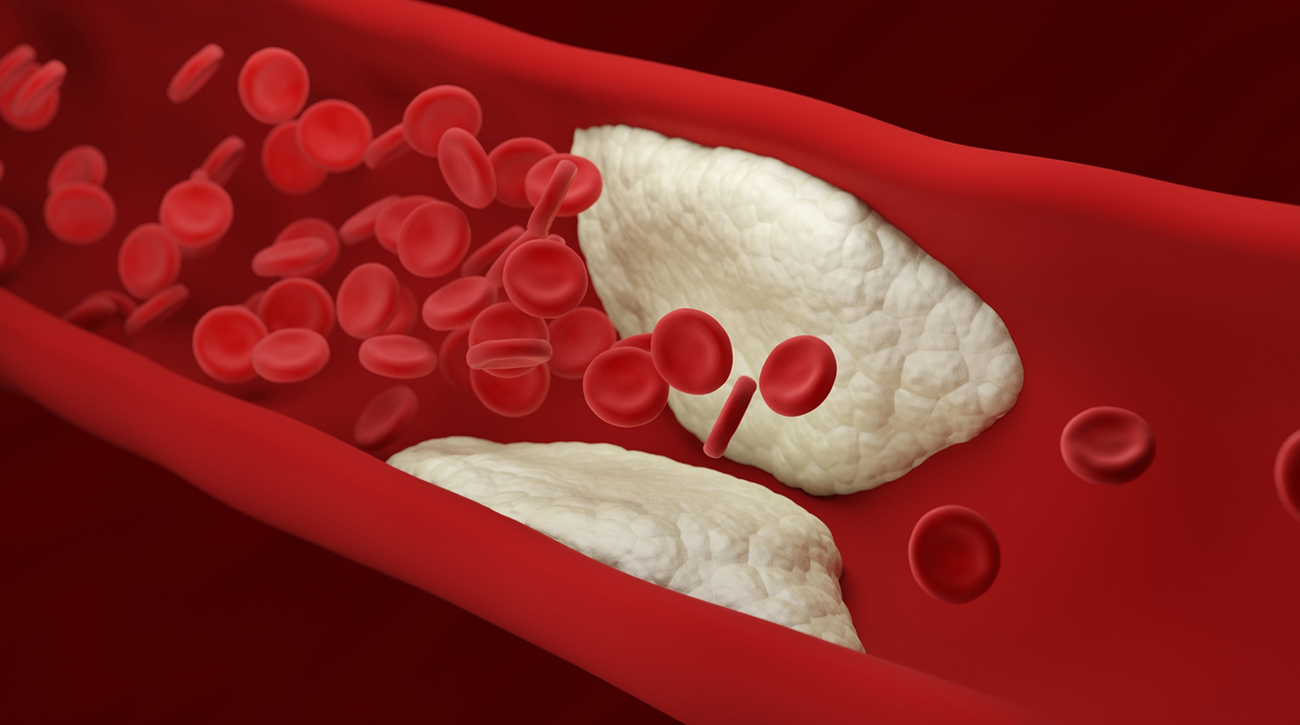Particles that are released from fat cells seem to play a pivotal role in determining risk for cardiovascular disease before traditional risk factors or symptoms appear, concludes a new study.
Matthew D. Barberio, PhD, an assistant professor of exercise and nutrition sciences at Milken Institute School of Public Health, is the study’s lead author. He conducted the research while at Children’s National Medical Center and worked with colleagues from Children’s National and New York University Winthrop Hospital.
The study of teenagers, including those who were lean, overweight and obese, found these particles, called extracellular vesicles (EVs), can disrupt the disposal of cholesterol, a fat that plays a role in atherosclerosis. In atherosclerosis, blood vessels become inflamed and white blood cells called macrophages settle in the vessel wall and become overloaded with fatty cholesterol. Those cholesterol loaded cells build up over time and become the hardened plaque that clogs the arteries, increasing the risk of heart attacks and strokes.
It remains a mystery how fat cells residing in one place in the body can trigger mayhem in cells located far away. However, EVs seem likely troublemakers since they enable intercellular communication, the researchers said.
The researchers examined the relationship between EVs and their effect on macrophages. They found seven specific small sequences of RNA (microRNA) carried within the EVs from human fat tissue impaired the ability of macrophages to eliminate cholesterol. The new work builds on earlier research that found microRNA derived from fat cells becomes pathologically altered at some point in the development of obesity.
“We were surprised to find that EVs could hobble the macrophage cholesterol outflow system in adolescents of any weight,” Barberio said. “It’s still an open question whether young people who are healthy can tolerate obesity—or whether there are specific differences in fat tissue composition that up kids’ risk for heart disease.”
To conduct the study, the researchers enrolled 93 kids aged 12 to 19 with various body mass indexes, including the “lean” group, 15 youth whose BMI was lower than 22; and the “obese” group, 78 youths whose BMI was in the 99th percentile for their age. They collected belly fat during abdominal surgeries and visited each other’s respective labs to perform the experiments.
The team plans to build on the current findings to find out ways to safeguard kids and adults against future cardiovascular risk. The study was published online July 22 in the Journal of Translational Medicine.


